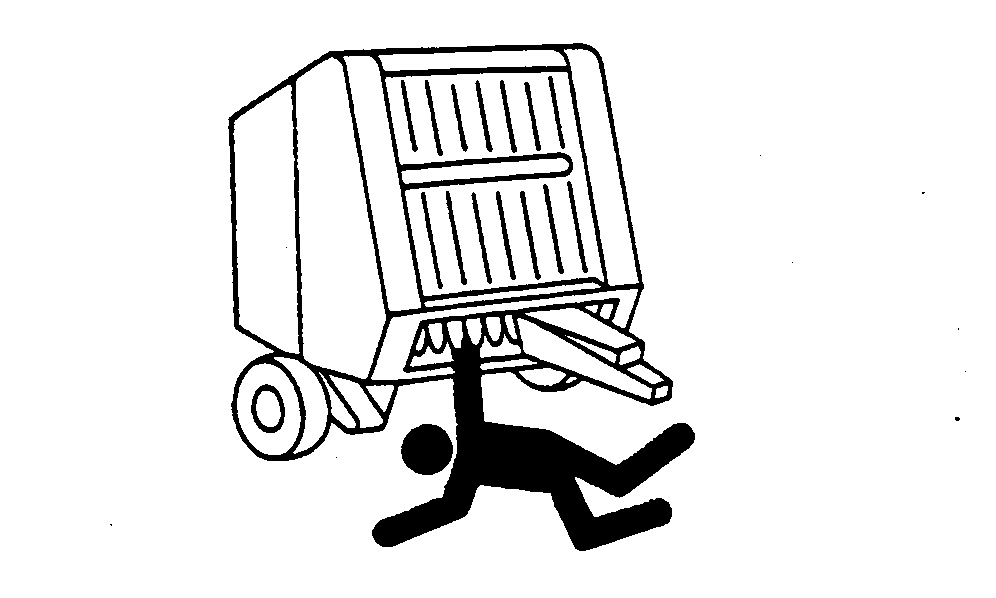Baling Short, Dry, Slick Crops
Do not attempt to feed crop or twine into baler or unplug feed area while baler is running. The baler feeds material faster than you can release it. Disengage PTO and shut off engine. To reduce plugging try one or more of the following techniques: 1. Regular Pickup; Check pickup belt tension and condition. (See ADJUSTING PICKUP BELT IDLER in Service-Baler section.)MEGATOOTH or MegaWide Pickup; Check pickup slip clutch. (See CHECKING PICKUP SLIP CLUTCH TORQUE in Service-Baler section.) 2. Check for missing or broken pickup teeth. 3. Raise pickup as high as practical. 4. Reduce engine speed to 1500 rpm or below (reduces chaffing) and shift transmission to higher gear to maintain ground speed. 5. If equipped with variable core valve, reduce bale density as necessary.
See OPERATING VARIABLE CORE VALVE in one of the following sections: 6. Remove individual compressor rods, leaving one center rod and one rod on each end of the cross tube. If material still accumulates, remove compressor rack assembly. Always replace compressor rack under normal conditions. (See REMOVING or INSTALLING COMPRESSOR RACK ASSEMBLY in this section.) |
|
OUMX005,0000033 -19-14APR03-1/3 |
|
7.
Make larger windrows (rake together as necessary), but keep windrows narrower than bale chamber width.
8. Disengage PTO anytime crop is not being fed into baler, such as turns and field borders. 9. In extremely short, dry conditions, it may be necessary to lower the baler. (Refer to WHEEL SPINDLE POSITIONS in Preparing the Baler section.) 10. Adjust pickup float springs to provide more force (float). (See ADJUSTING PICKUP FLOAT SPRINGS in Service-Baler section.) 11. When baling dry straw, it may be necessary to place twine across full width of bale to prevent straw from coming out of feed opening while tying.
NOTE: Two wraps are suitable for most crops, but three or more wraps are needed for:
12. If machine RPM is less than rated PTO speed, use the following chart as a guideline for desired wraps. |
OUMX005,0000033 -19-14APR03-2/3 |
If bales fail to start rotating due to one or both sides of the windrow extending outside width of bale chamber, try the following suggestions: 1.
Make windrows narrower than bale chamber width, even with MegaWide pickup.
|
|||||||||||||||||||||||||||||||
OUMX005,0000033 -19-14APR03-3/3 |
 CAUTION:
DO NOT TAKE CHANCES! To avoid injury or death by being pulled into the machine:
CAUTION:
DO NOT TAKE CHANCES! To avoid injury or death by being pulled into the machine:
